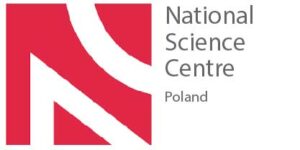research
Endosymbiosis in microbial eukaryotes
Symbiosis – the “living of unlike organisms” – is one of the most fascinating interactions in nature. Symbioses include relationships between organisms that are beneficial to both partners as well as relationships between parasites and their hosts. In each case, symbiosis influences the underlying biology of the participants such as in the relationships between corals and algae. Corals are home to algae that photosynthesize (giving the coral energy) while the corals provide algae with shelter. Endosymbiosis constitutes a particular case of symbiosis where one partner lives inside the cells of the other.
The origin of eukaryotic cells was a major symbiotic event. It was a symbiotic integration of two different microorganisms and led to the origin of animals, plants, fungi and protists. Endosymbiosis is one of the main driving forces of eukaryotic evolution and resulted in the establishment of mitochondria and plastids. However, since mitochondria and plastids were established long ago, we do not know the intermediate stages and have no direct insight into the process of endosymbiosis. Only by analyzing more recent endosymbioses where we can identify intermediate stages can we shed new light on the establishment and role of endosymbiosis. Recent research suggests that such endosymbiotic interactions between microbial eukaryotes (protists) and prokaryotic organisms (bacteria and archaea) are widespread, giving us a golden opportunity to identify organisms in the intermediate stages of endosymbiosis to reveal universal patterns of this process.
Our main goal is to understand the establishment of endosymbiosis by identifying and characterizing novel protist-endosymbiont systems at intermediate stages of endosymbiosis. We will do that by screening various freshwater environments for such interactions, isolating and identifying partners using microscopic and genetic methods. The organisms in the intermediate stages of endosymbiosis will be studied at the level of genome evolution and at the level of gene expression regulation that accompanies the endosymbiotic interaction. We will also examine the ultrastructure of the studied cells which – together with genetic information – will reveal the nature of the studied systems. Experiments on established cultures of protists and their endosymbionts will enable a deeper understanding of the endosymbiosis process, including identifying the genes encoding proteins essential for its early stages.
The results of this project will bring us a more profound understanding of the fascinating evolutionary processes of endosymbiosis that ultimately led to the emergence of complex eukaryotic cells. Deciphering this process is critical to cell biology, particularly for understanding the origin and functioning of chloroplasts and mitochondria. Unravelling the diversity and complexity of endosymbioses in aquatic environments will also contribute to our understanding of the protists’ endosymbioses role in the functioning of these ecosystems.
Protist and bacteria diversity and interactions in freshwaters
Microorganisms are an abundant and diverse group present in all ecosystems. They include prokaryotes, such as bacteria and archaea, and single-cell eukaryotes, known as protists. Microbial communities are a crucial element of ecosystems, and their functioning depends not only on their taxonomic composition but also on the undergoing interactions. The use of modern DNA sequencing techniques was a breakthrough in the study of microorganism diversity because it allowed the identification of microbial species without culturing. The new methods have uncovered a vast diversity of microorganisms and many previously unknown evolutionary lineages. However, most research to date has focused on bacteria, while the variety of protists remains poorly understood. We also know little about the interactions of protists and bacteria that may be crucial for the functioning of ecosystems.
In this project, we will identify eukaryotic microorganisms and bacteria occurring in the lakes of the Masurian Lake District. To do so, we will use sequencing methods for short DNA fragments. A reference database is, however, needed to identify organisms based on DNA sequences correctly. Therefore, we will expand the existing database using single-cell sequencing and nanopore sequencing. Analysis of the co-occurrence of protists and bacteria will help to identify their interactions. Sequencing of protist genomes and total genomes of their microbiomes will provide insight into the nature of these interactions. We are particularly interested in the relations between protists and endosymbiotic bacteria and protists’ interactions with pathogenic bacteria. Finally, we will determine how environmental factors affect the diversity of microorganism communities and their interactions.
The completion of the project will help to uncover the diversity and interactions of microorganisms in freshwaters. Identifying the interactions of protists and pathogenic bacteria will help pinpoint the natural, environmental reservoir of these bacteria. This will facilitate the prediction of their future outbreaks, which might be a threat to human and animal health. Research in lakes with different trophic statuses will allow assessment of the impact of the lake productivity on the composition of their microorganism communities. This will help predict changes in freshwater ecosystems resulting from human-induced eutrophication and contribute to their more effective protection.
Evolution of phototrophy in eukaryotes

